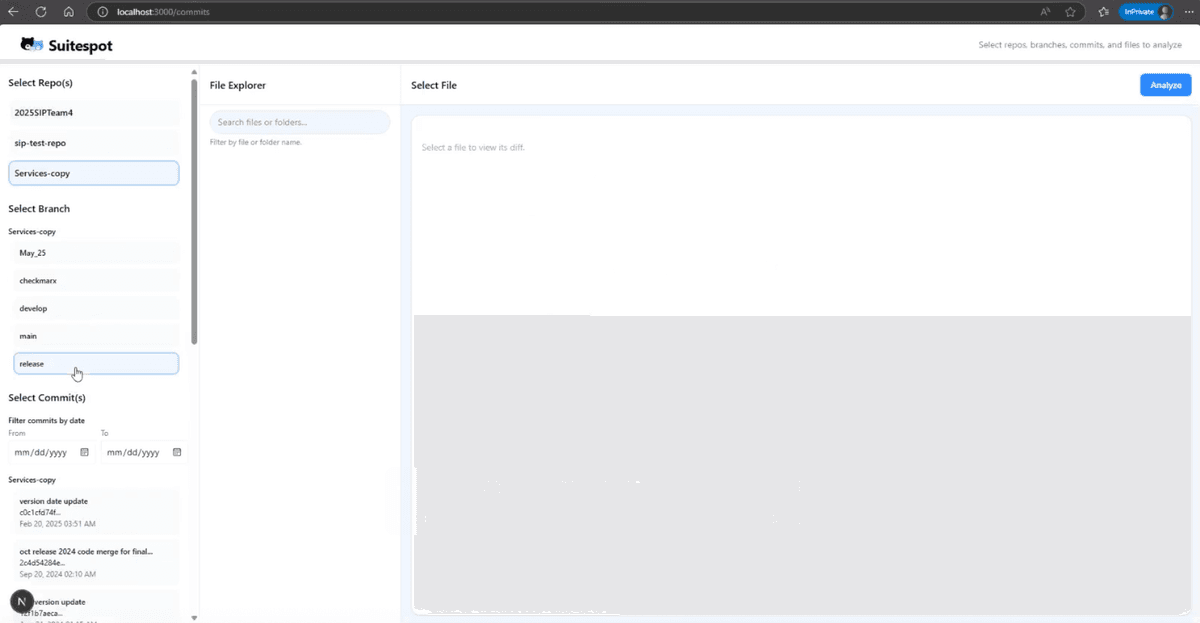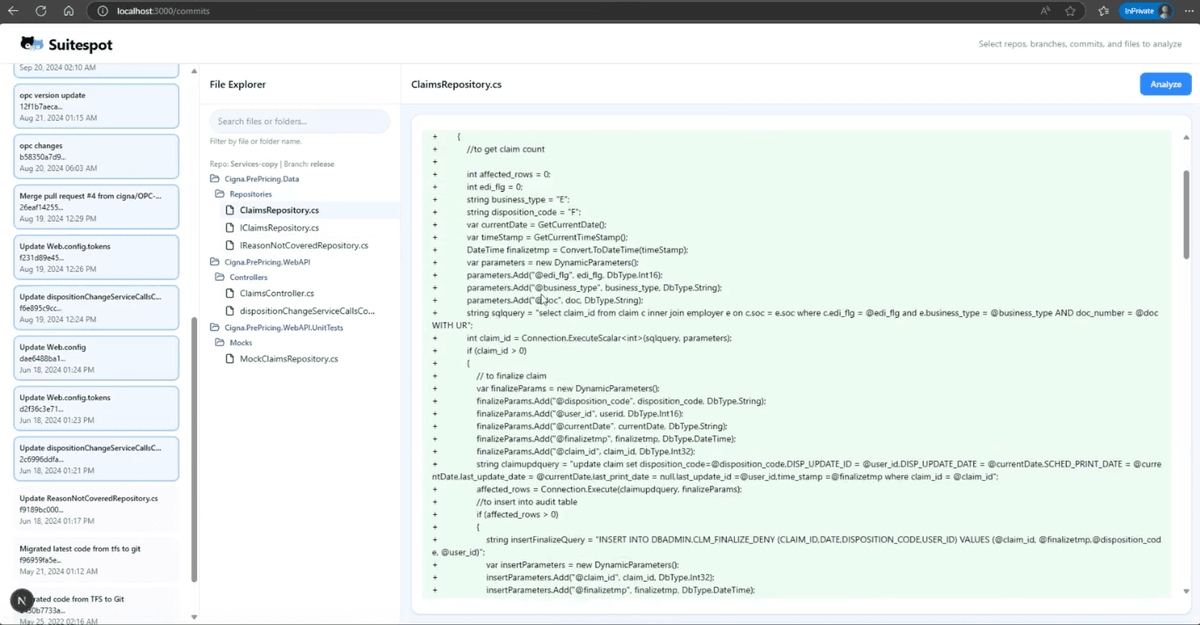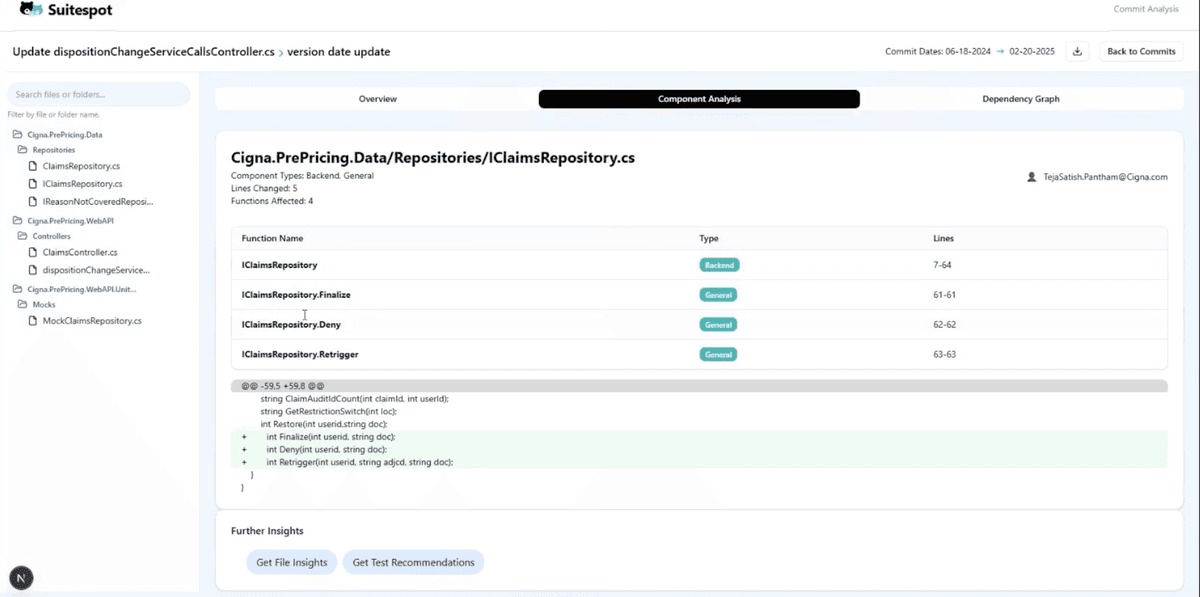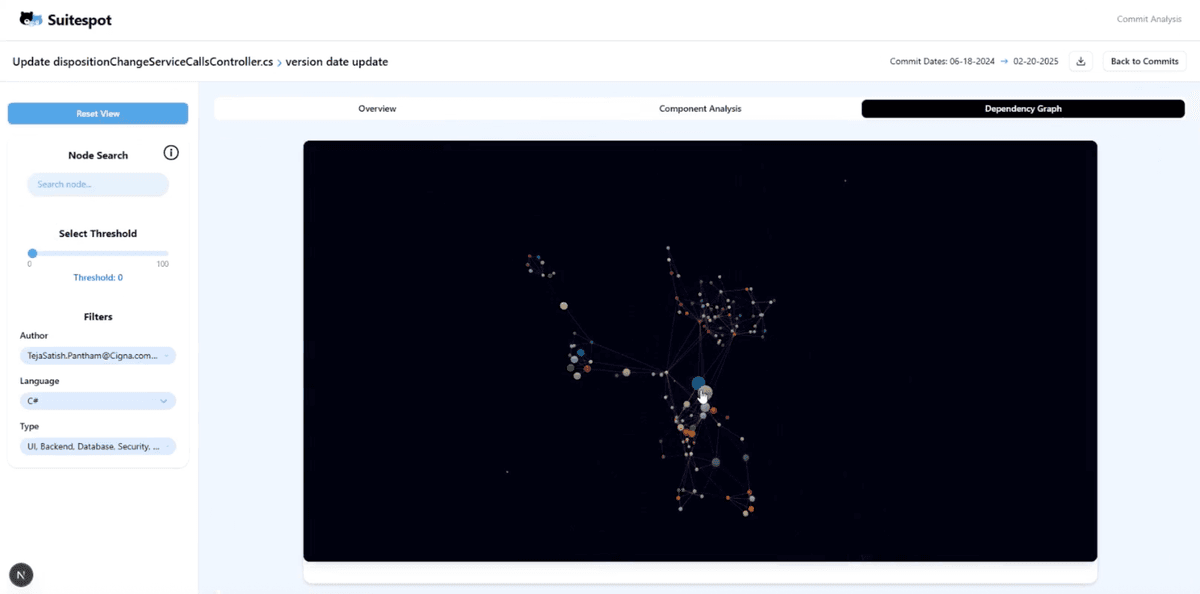Commit-Based Test Analyzer
Optimizing Testing Strategies Through Code Change Analysis (unable to share fully due to company policy)

Project Overview
Product/SWE/Design: Managed frontend development, engineering, and design of an AI-powered tool for developer testing decisions, as part of an intern group project at Cigna focused on optimizing test suite efficiency through data insights and code dependency analysis, reducing testing costs by 35%. Unable to share final produce due to company policy (screenshots available in final designs section).
View Final DesignsProblem
Enterprise software teams were spending 40% of their CI/CD budget on unnecessary tests, while still missing critical test scenarios. Manual test selection led to either over-testing (wasting resources) or under-testing (increasing production defects). Analysis showed teams lacked visibility into how code changes actually impacted system components.
Solution
Created an intelligent system that: 1) Analyzes code changes line-by-line, 2) Maps dependencies between components, 3) Classifies impact (UI, database, etc.)
Team
- 3 Frontend Developers (including me)
- 3 Backend Developers
- 1 Scrum Master
My Contributions
- Led product vision and roadmap development
- Conducted stakeholder interviews with 3+ engineering teams to validate problem space
- Spearheaded the visualization approach for technical audiences
- Coordinated between backend and frontend teams
- Developed the React frontend and integrated with the backend API
- Presented results to 200+ employees at Cigna
Tools
- Python
- React
- GitHub API
- Django
- Next.js
Timeline
- Week 1–2: Problem validation and research
- Week 3–4: Data analysis and algorithm design
- Week 5–6: Visualization prototyping and user testing
- Week 7–8: Frontend development and integration
- Week 9–10: Pilot testing and feedback
- Week 11–12: Final refinements and presentation
Design Process
Problem Validation
Interviewed 15+ engineering teams to understand pain points
Data Analysis
Analyzed historical test runs and defect reports
Algorithm Design
Developed change classification and impact scoring models
Visualization Prototyping
Created interactive web prototypes on Figma
Development
Built the frontend in React and integrated with the backend API
Pilot Testing
Deployed and tested for bugs and usability
Process Documentation

Mapping different iterations of the website to improve usability and functionality
Research
Methods
- Engineering team interviews
- CI/CD pipeline analysis
- Prototype usability testing
Key Insights
- 82% of engineers wanted better visibility into change impact
- Test suites were often selected based on habit rather than change analysis
- Dependency mapping was the most requested feature by architects
Final Designs

Users select range of commits to analyze and view impact

View all the files associated with the selected commit range
.png&w=1200&q=75)
Overview of the analysis showing impacted components, LLM analysis, and more

Component analysis showing the type of functions impacted by the changes

Dependency Graph visualizing how components are interconnected and affected by changes
Outcomes
- Challenges: Had to quickly learn Git/CI concepts and translate a very technical prompt into something we could design for.
- Learnings: Gained a stronger understanding of large-scale testing, iterated on designs more quickly, and improved frontend development speed.
- Impact: Built a commit-based test analysis tool that reduced unnecessary testing costs by 35% and sped up test selection decisions by 40%.